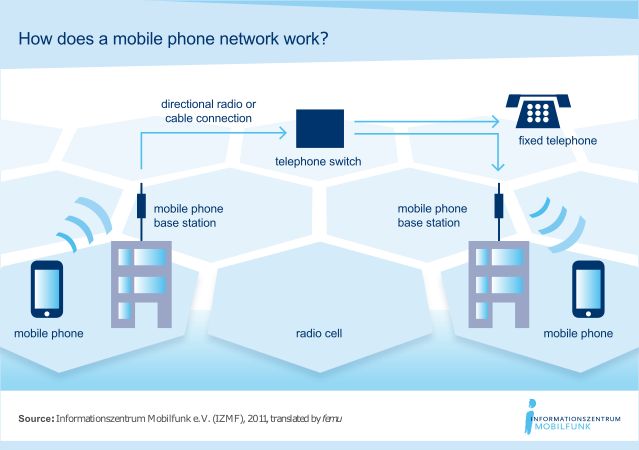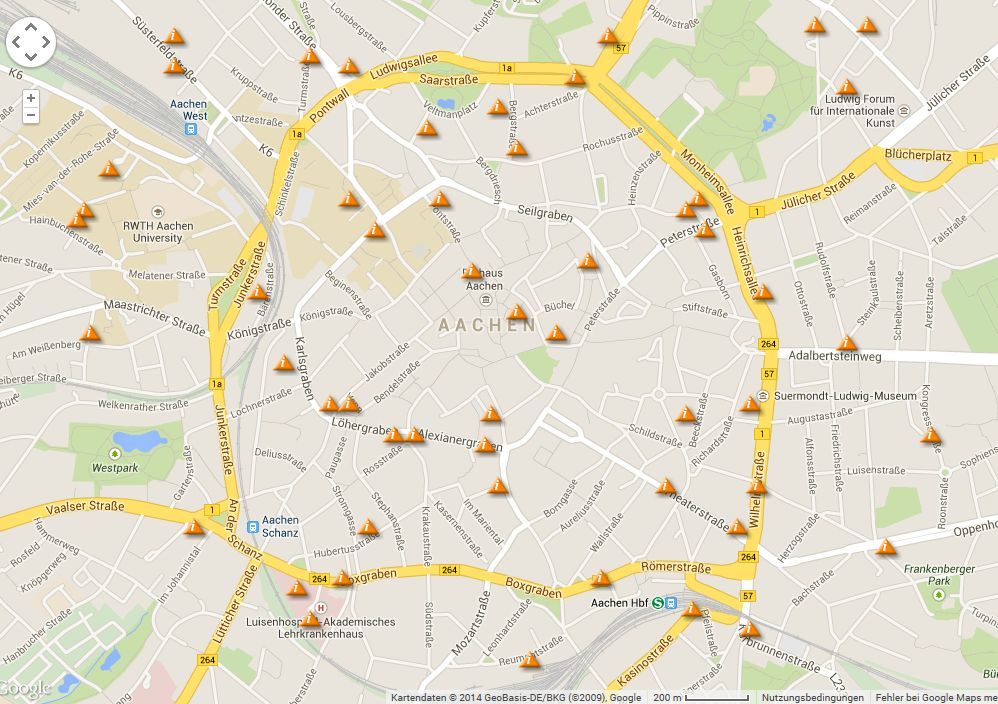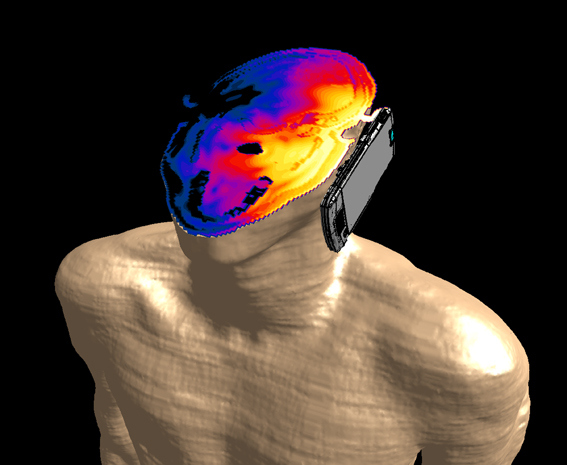Mobile communication
Radiofrequency electromagnetic fields for the transmission of radio, television and mobile services are sent with transmitting antennas. In mobile communication in Germany a network of more than 73,000 base station sites (as of 2020, Source:Bundesnetzangentur ) make it possible to make calls or send and receive data virtually anywhere with mobile or smart phones. Often, various base station antennas of different network operators are installed at one site.
Radio cells
Each network operator that is represented at an antenna site builds its own “radio cell” around this site. The radio cells of adjacent sites overlap, so that there is an automatic handover of a call or the current data traffic from one antenna to the next, if the user moves from one network cell to the other (e.g. on a train or in a moving car). In rural areas, the radius of a cell is many kilometers. In metropolitan areas, however, there is a denser network of smaller cells. The transmitter power of the base stations varies between 10 and 50 watts at ranges of a few 100 meters to 30 kilometers. Depending on the mobile telecommunications standard (GSM, UMTS or LTE, Historical review) and the network operator, frequencies between 870 MHz and 2690 MHz are used in mobile communications.

image: Informationszentrum Mobilfunk e.V.
Radiation of mobile communication antennas
With the distance from the antenna, the field intensity decreases. In the case of the field strength, at uniform radiation, the decrease is inversely proportional to the distance (i.e., for example, only 1/10 of the initial field strength at a distance of 10 m). In case of the power density, the decrease is inversely proportional to the square of the distance (i.e., for example, only 1/10² = 1/100 of the output power density at a distance of 10 m).
Unlike many antennas of radio stations and television transmitters, however, mobile phone base station antennas do not radiate equally in all directions. The field is rather focused by means of reflectors, either vertically (with omnidirectional antennas), or vertically and horizontally (for sector antennas). In case of the commonly used sector antennas, this results in a lobed radiation with one main beam (for coverage of the long-range) and several side beams (to cover the short range) (see figure). Thus, at identical transmission power levels, the immissions close to a mobile base station are significantly lower than close to radio or television transmitters.
image by courtesy of the Bavarian State Ministry of the Environment and Consumer Protection; in German
Distribution of mobile phone base stations and radio transmitters
The mobile phone base stations network is much denser than the network of radio transmitters. They can therefore be powered with much less energy than radio stations and television transmitters and can be safely installed in residential areas. On the website of the German Federal Network Agency all transmitters subject to approval are registered in the EMF database, giving information about their locations in Germany and their specific properties (Bundesnetzagentur, see figure).

Source: German Federal Network Agency, Map data: Google, GeoBasis-DE/BKG
Mobile phones and smartphones
While a base station continuously emits radio signals, a mobile phone or smartphone only emits radio signals when transmitting calls, data, and text messages (SMS). In addition, short signals are transmitted if for example the radio cell is changed while driving and the device contacts a new base station. When there are no calls in progress and there is no data traffic, i.e. in standby mode, an activated mobile phone indeed receives control signals continuously from the nearest base station, but in turn sends only every few minutes a short beacon signal to indicate its position. When making a call, during call set-up (here maximum transmission power!), or during active data traffic, the own mobile phone is the most powerful radiofrequency field source, which human beings are exposed to in their everyday surrounding. The emitted fields of all other radiofrequency sources in the environment contribute much less to the personal exposure. The reason for this is that mobile phones indeed have a much lower transmission power than a transmitting antenna, but the distance to the body is much lower (especially the distance to the head, while making a call). Furthermore, because of the distance, the body is uniformly exposed to the electromagnetic field of a base station, while mobile phones or smartphones mainly cause local exposures to the head or other body parts (see figure). The transmitted power of the mobile phone depends on the connection quality between the phone and the base station. The transmitted power is upregulated in the case of a poor connection quality (e.g. within the shielding metal box of a car). Today, mobile phones and smartphones work under the global GSM, UMTS (or CDMA-2000), and LTE standards. The transmitted power can reach a peak level of 2 watts in the GSM 900 network and a peak level of 1 watt in the GSM 1800 network. Due to the automatic power control, the average values during voice calls are well below these peak values; they reach 250 mW and 125 mW, respectively (Source: FOPH (p.4)). In UMTS mode, mobile phones send continuously with a maximum average power of 125 mW. However, they reduce the power even more efficiently than GSM mobile phones through better power control (Source: Bundesnetzagentur).
To specify the absorbed energy in body tissues, which arises from the emitted electromagnetic fields of mobile phones and smartphones, the specific absorption rate (SAR) is used. In the tissue the energy is mainly converted into heat. Therefore, the SAR is expressed in watts per kilogram of tissue (W/kg) and is averaged over a six-minute exposure interval in corresponding measurements or simulations. During this time, an equilibration between the energy input and the heat dissipation in the tissue has been reached. By averaging over different body masses with standardized SAR calculation methods, whole body exposure or partial body exposure (e.g. eye-only exposure in the case of the 10-gram SAR) are distinguished. Because mobile phones or smartphones are normally used close to the body, a distinction is usually made between the scenarios “head” and “body worn” in the corresponding technical device information.
Information about the emitted field strengths of mobile phone base stations, mobile phones, and smartphones are provided in the “Exposure sources” database of the EMF-Portal mobile communication. For more information about the SAR of mobile phones and a current table with SAR values of many commercially available mobile phones, please refer to the German Federal Office for Radiation Protection.

image by courtesy of the IT'IS Foundation, ETH Zürich